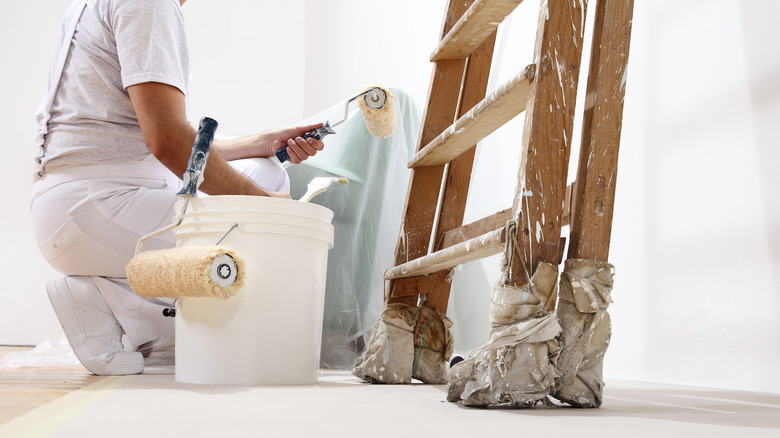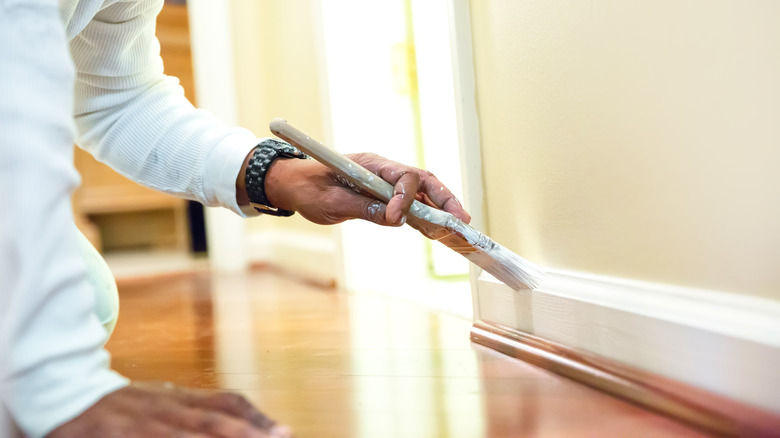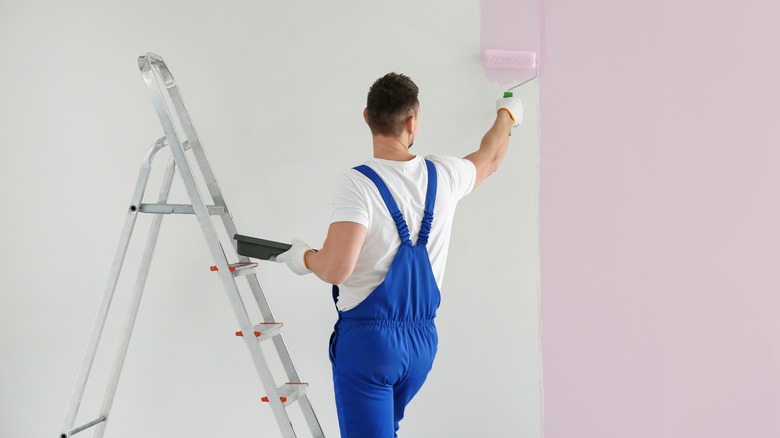HGTV's Mike Holmes Says Painting A Room Should Be Done In This Order
Repainting the exterior of a home is necessary to protect the structure from natural elements, but our interior wall coverings are mostly an aesthetic choice. While exterior paint should be redone every five to 10 years, interior walls are usually only redone when the resident wants to refresh dirty walls or try a new color. Paint is one of the best ways to revamp your space on a budget, even if the painting process can be tedious. If you plan to repaint your walls yourself, you can still take advice from the pros to ensure you come out with a professional finish. Mike Holmes is a beloved HGTV personality and the star of multiple home improvement shows, including "Holmes on Homes," "Holmes Family Rescue," and "Holmes Makes It Right." Having painted thousands of rooms in his time, Holmes advises you to rethink your painting process. "Here's the order the pros tend to follow when it comes to painting a full room," he says (via Make It Right), "Start with the baseboards and trim, then do the ceiling, then do the walls last."
Once you've settled on the perfect color and picked up your gallons of paint, you might stare at the big walls before you and wonder where to begin. Here's how Holmes recommends you approach a total room repaint, and here are his painting tips that even HGTV stars swear by for getting the job done quickly with super clean results.
Start small and focus on details
A good paint job really starts with good preparation, so Mike Holmes reminds readers to thoroughly de-grime and brighten up your dirty doors and baseboards and clean the walls themselves if needed. "In rooms like kitchens that can see a lot of grease build-up, it's a good idea [to clean the walls]," Holmes writes on his website, Make It Right. "If you live in a smoking home, you'll want to give them a wash before painting. Otherwise, you should be fine to skip that step." Next, fill in any nail holes and use painter's tape to create a tight seal around your baseboards, outlet covers, ceiling corners, and any other edges.
While it might sound surprising, the walls are actually the last thing you should touch during your paint job. Holmes explains that it's generally easier to start with the smaller details, like baseboards, before moving on to large strokes, like the ceiling and walls. Painting the ceiling before the walls will eliminate any worries about splattering, as any drips from the ceiling will be covered up by wall paint later. Doing things in this order may also help you to preserve some energy, instead of saving the detailed, laborious work for last. "Once that's finished, you properly tape them off to protect them when you tackle the larger part of the project," concludes Holmes (via Make It Right).
Work on your walls last
By this time, you might be feeling a little eager to start painting your walls and wonder, is using painter's tape really worth the hassle? Mike Holmes strongly recommends it, but he says (via Make It Right), "If you didn't apply tape like I suggested, I hope you've got a steady hand. Have a rag on hand to immediately wipe up any droplets or mistakes." If you happen to drip some wall color onto your freshly painted baseboards and it dries before you can catch it, you can also touch them up later with a dab of baseboard paint, but it's much easier to prevent the mess before it happens.
As you're painting your walls, Holmes recommends working with a roller brush and moving from the top of the wall to the bottom. This way, you can smooth out any potential drips as they form. Most interior paints will require two coats to achieve their perfect color and finish, but don't rush the drying process. "Once that [first coat] starts to dry, leave it alone! By adding more, you could wind up with a streaky wall," warns Holmes. By following these steps and practicing a little patience, you'll have freshly colored, gleaming walls in no time.



